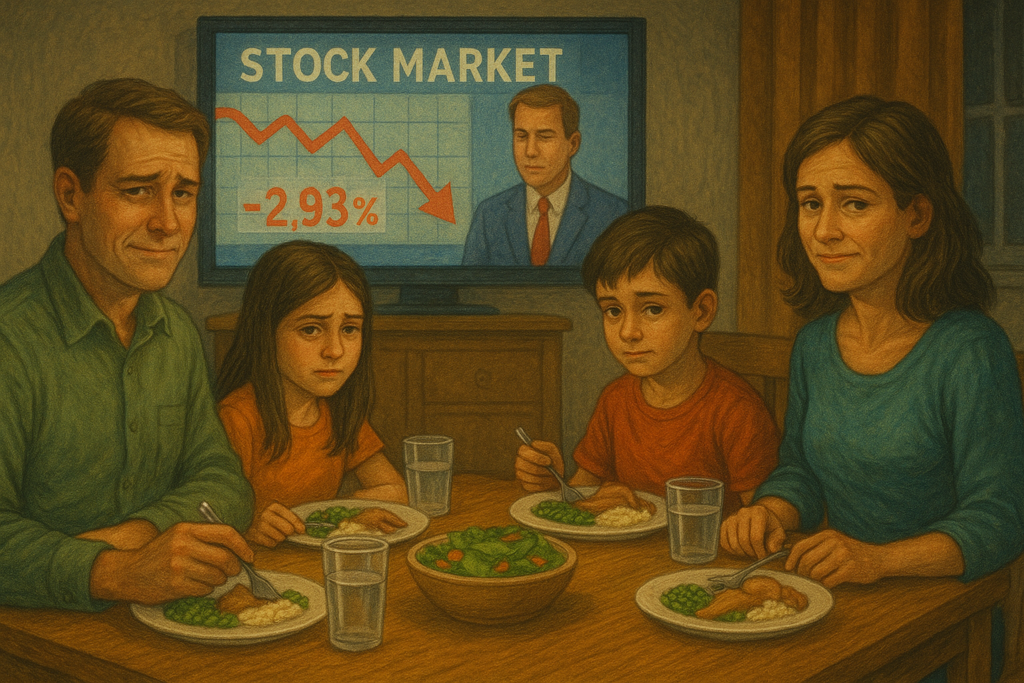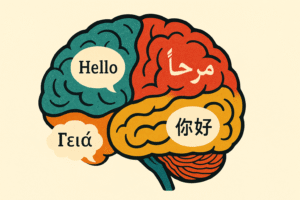Fun Fact: India’s middle class is expected to make up nearly 63% of the population by 2047—but that doesn’t mean they’re sleeping easy at night.
Welcome to the world of The Great Indian Middle-Class Anxiety—a space where EMI (Equated Monthly Instalment) calculators are bookmarked, dream homes exist in Pinterest boards, and every salary hike feels like running faster on a treadmill going nowhere. The Indian middle class, long hailed as the engine of the nation’s economy, lives caught in a paradox: burdened by aspirations and overwhelmed by obligations.
They are the ones who hustle through traffic and timelines, save for retirement and their kids’ coding classes, dream of Europe but settle for Mahabaleshwar, and worry equally about climate change and rising LPG (Liquefied Petroleum Gas) prices. Their anxiety is invisible but omnipresent—woven into WhatsApp forwards, LinkedIn updates, and crowded Mumbai locals. This blog dives deep into that emotional landscape, exploring what makes the Indian middle class so uniquely anxious.
The Middle-Class Dream: Now a Moving Target?
For decades, the Indian middle-class dream was straightforward—own a house, educate your kids, take a vacation, and retire with dignity. But somewhere along the way, the cost of this dream ballooned.
A 2BHK apartment in a decent locality now costs upwards of ₹1 crore in metros. Education, even in government-aided schools, has become a competitive, hyper-expensive affair with fees for international schools and coaching institutes rivalling college tuition in the United States. And that’s before we even talk about healthcare or retirement planning.
What was once achievable through a stable job and frugality now demands dual incomes, constant upskilling, and a side hustle or two. The middle class isn’t dreaming bigger—they’re working harder just to stay in place.

Jobs, Jitters, and Just-In-Time Stress
India’s job market has undergone a seismic shift in the past two decades. Stable government jobs—once a gold standard—have become elusive, and even cushy private sector jobs come with “hire-and-fire” uncertainty.
For every software engineer at Infosys (an Indian IT services company), there are five freelancers on Fiverr or Upwork struggling to land their next gig. Corporate India runs on KPIs (Key Performance Indicators), appraisals, and a treadmill of upskilling, yet job security remains a myth. Layoffs by tech giants like Wipro (an Indian multinational IT services company) and global firms like Amazon (a U.S.-based e-commerce and cloud computing giant) make headlines every quarter.
Even for professionals earning above-average salaries, there’s a lingering fear: Am I next?
The EMI Empire: Trapped in Instalments
Want to own a car? That’ll be a five-year EMI plan. Dream of a home? Here’s a 25-year mortgage. Craving the new iPhone? Easy EMI in 12 steps.
The middle class today is drowning in consumer credit, and the consequences are more than just financial. It creates a chronic state of low-grade anxiety, where your life decisions—what job to take, where to live, when to have kids—are dictated by monthly payments.
Banks advertise it as “freedom to choose.” But for many, it feels more like a gilded cage.
The Burden of Being “Good Enough”
The Indian middle class is stuck in a peculiar performance loop. They’re expected to be ideal workers, responsible children, present parents, and “woke” citizens—all while managing expenses and reading about 100+ unicorn startups on YourStory.
There’s a constant pressure to self-improve: learn a new language, practice mindfulness, hit the gym, invest in mutual funds, avoid sugar, buy term insurance, start a SIP (Systematic Investment Plan), and still be fun at dinner parties.
Social media makes it worse. Instagram tells them their peers are “living their best lives” in Goa, while they’re working late on a Saturday. This hyper-curated comparison culture deepens the insecurity.
The Parenting Trap: Olympics, IITs, or Both?
Middle-class parenting in India is a full-time project management role. Every child must be a prodigy. Piano, taekwondo, robotics, coding, elocution—every weekend is scheduled like a summit.
It’s not just about opportunity; it’s about status. Which school your child goes to, whether they cleared Olympiads, which country they go to for higher education—all have become metrics of parental success.
But in the process, parents are burning out, and children are inheriting the same anxiety that consumed their parents.
Healthcare Horror: One Illness Away
Healthcare costs in India are rising at twice the rate of inflation. One unexpected medical crisis can wipe out years of hard-earned savings. While health insurance penetration has improved since the COVID-19 pandemic, many in the middle class still rely on company-provided plans—until a layoff strips that away.
The unpredictability of health-related expenses adds to the middle-class dread. You could be one accident or illness away from dipping into your retirement fund or worse, crowdfunding your bills online.
Retirement: The Mirage on the Horizon
Retirement for many middle-class Indians isn’t a reward—it’s a haunting uncertainty. With inflation, healthcare costs, and longer lifespans, the idea of retiring at 60 feels less plausible.
While SIPs and NPS (National Pension Scheme) accounts help, many realise too late that financial advisors don’t always factor in rising rents, eldercare responsibilities, or the cost of supporting adult children still figuring out their paths.
The Silent Toll: Mental Health in the Middle Class
Mental health conversations in India are still taboo, especially among the middle class, where resilience is romanticised and therapy is misunderstood. Anxiety, burnout, and depression are rampant but rarely acknowledged.
Workplace wellness initiatives are often token gestures, and societal expectations discourage vulnerability. The cultural code is: “Just deal with it.”
But ignoring mental health doesn’t make it go away. It festers, showing up in hypertension, insomnia, or quiet desperation behind a forced smile.
Conclusion: Can the Middle Class Reclaim Peace?
The anxiety of the Indian middle class is not irrational—it’s the byproduct of living in a country in flux, where ambitions outpace opportunities and security feels like a privilege. But the answer isn’t to stop dreaming; it’s to stop pretending that hustle is healing.
India must have more honest conversations about work-life balance, financial literacy, healthcare access, and emotional well-being. Employers, policymakers, and even families need to address the pressure cooker that the middle class has been living in.
Because between dreams and deadlines, something precious is slipping away—the ability to live without fear.
Author’s Note
I grew up in a middle-class home where silence fell every time the electricity bill arrived, and jubilation followed when the bonus did. Writing this blog was personal. If you’ve felt this anxiety, you’re not alone—and maybe, just maybe, we can talk about it a little more openly now.
G.C., Ecosociosphere contributor.




